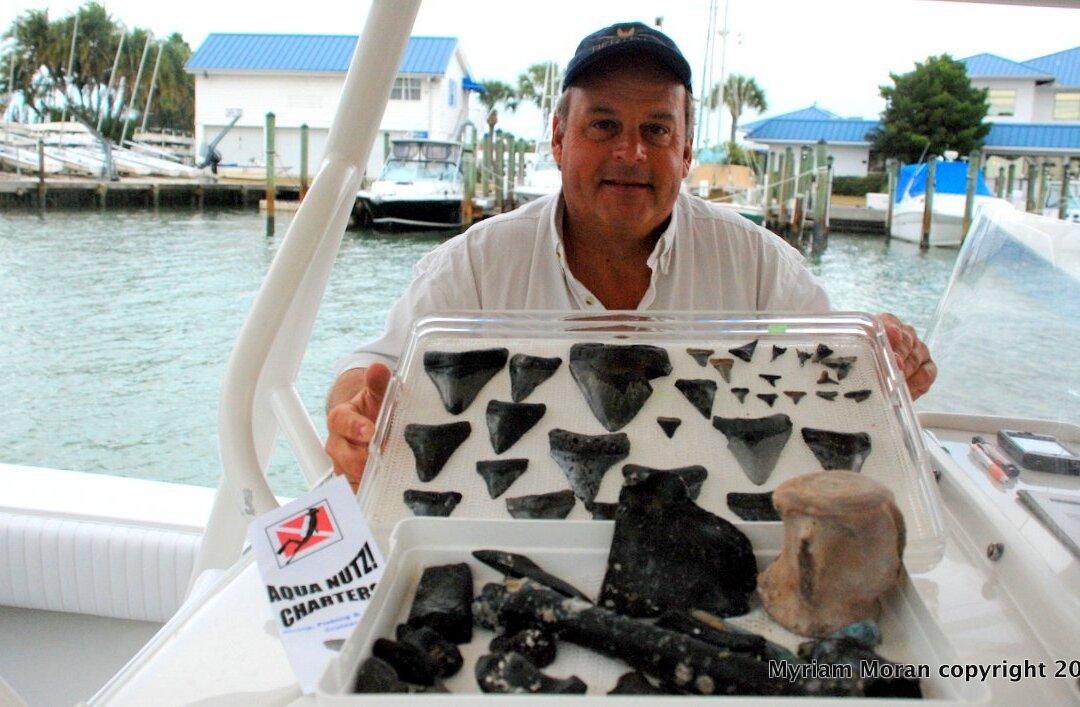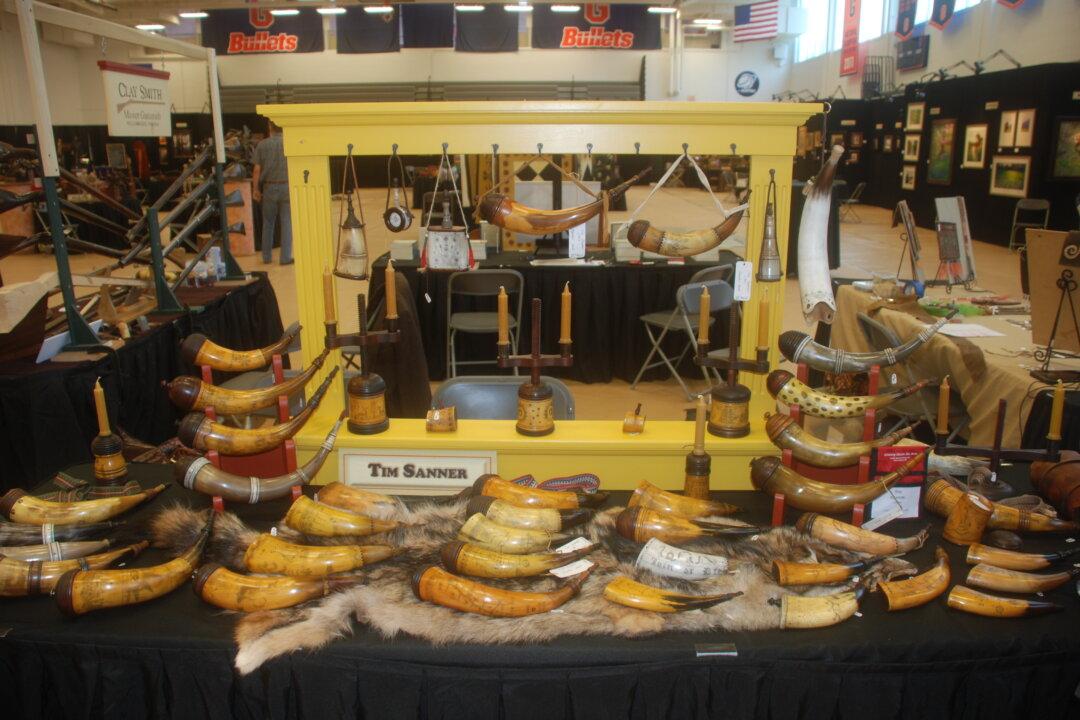The City of Venice, Florida is on the Gulf of Mexico in Sarasota County about 80 miles south of Tampa. It is a small town of boutiques, shops, art galleries and restaurants reminiscent of the 50s. People are friendly and the pace is relaxed.
Most folks that live in Venice are typical of Kevin and Lori Klasing. From Indiana originally, they moved to California for Kevin’s work in the semiconductor industry in Silicon Valley. In retirement, if you can call it that, they bought Venice Beach Villas, a quaint and homey motel a couple of blocks from Venice Beach. Efficiency apartments are well equipped with kitchens and comfortable appointments to make a stay feel like home with every amenity. At the same time, the villas retain the flair of “old Florida,” where there was no need to lock doors. People come to enjoy the beaches and warm weather, eventually go home to the frigid north feeling rested and refreshed.
“Man you were swimming in this pool for a half-hour and didn’t taste it was salty,” a guest laughed. It was late evening and the heated pool was a wonderful way to relax after a day beachcombing. The pleasant, somewhat salty taste, Kevin says, is only because the pool is used all year around. It was wonderful and relaxing.
“I’m a diver. Don’t get the chance to go out much any more,” Kevin said. Lori echoed the same sentiment. She took down a tray of fossilized shark’s teeth a diver that frequently stays at the villas put together for them. “People call from all over the world. One fourteen-year-old kid that stayed with us in the summer found two five-inch shark’s teeth, bigger than the palm of your hand,” he added.
It’s like that on “the island,” as the place is called. People come to search the beaches for fossilized shark’s teeth and dive in the shallow waters of the Gulf. There are public beaches on Casey Key and the Island of Venice where wave action casts fossils and beautiful shells up on shore.
Venice Beach, at the end of West Venice Avenue, is a popular swimming beach, however, for the best chance finding shark’s teeth drive south on Harbor Drive about two miles to Caspersen Beach. The beach is south of Venice Airport and has plenty of free parking. A restoration program created boardwalks over the dunes. There are picnic tables and walkways that make beach access easy. Most of Caspersen Beach is left unspoiled, there has been no sand restoration, it is in a natural state.
It takes a little getting used to it to spot small teeth that may be moving with the waves. Sorting through shells and bits of coral that wash up and remain as pools in rocks or on the beach just beyond the surf line offers the best opportunity to find them.
“Let’s look at the tide tables. Best chance is at low tide,” Lori Klasing said. She typed the tide information in on her computer. “Ah, 4:09 AM is low tide. Well your best time then is early morning before they get picked over.” It was the best time. We found many good examples of shark’s teeth in patches of black sand and among small accumulations of shells caught by rocks on the beach.
Nokomis Beach is on Casey Key and is lifeguarded. It is also a good place to hunt fossils as is Brohard Beach. Brohard’s 740' fishing pier has rest rooms, snack bar and bait shop. Of all the best beach to search is Caspersen, a little less frequented and wilder.
“The land here was underwater. We find fossils such as horse teeth, saber tooth tiger teeth, camel bones and woolly mammoth tusks because a river cut into the dirt and ran out here later on in history,” Captain Mike Kopecnik explained. Mike with his partner, Captain Brian Cross, operate Aqua Nutz Charters. They are both divers and enjoy fossil hunting underwater as much as the affable team enjoy bringing visitors out aboard their 31-foot Jupiter center console dive boat to join in the fun.
Mike is originally from Burlington, Wisconsin. His grandparents lived on Siesta Key and his family owned a hotel on Casey Key. He has been living in Venice for the last 20 years. Brian Cross got hooked on diving for fossils from his Dad, Gil. Gil started taking people diving for shark’s teeth about 9 years ago.
“I came here from Virginia Beach, Virginia. I’ve been diving 22 years. My Dad is a big fossil diver. Where we live, here in Venice, it’s the shark’s tooth capital of the world,” Brian said. “If we didn’t have divers today then Mike and I would be out diving anyway. We love it.”
Mike and Brian picked up their divers at the public boat launching ramp in Higel Park Marina on Tarpon Springs Drive not far from Venice Beach. There is free parking, rest rooms, picnic tables and for those that have boats, a free access launching ramp. The long wooden quay makes loading and access easy.
Mike and Brian whet divers appetites with a display of Carcharodon Megalodon teeth that they’ve found. Some are as big as the palm of your hand. The display included fossilized teeth from Makos, Great White sharks, Sand Tiger sharks, Lemon sharks, Bull sharks, Tiger sharks as well as fossils. Brian found the inner ear from a whale, sperm whale teeth and an intact bone.
“I just found this yesterday. Just the black end was sticking out. When I pulled it I thought it would be broken but the whole thing came out of the sand. It’s the leg bone of a camel or llama. This is a knuckle from a camel, this is part of a turtle, a whale vertebrae. This is a horse’s tooth. We find a lot of rib bones of whales. These brass shells were from the military. They put up a lot of targets during the war and we find empty casings dated 1943 and 1944,” Brian explained, showing his tray of fossils.
He stowed the exhibits and loaded divers aboard the Jupiter. They never take more than six divers and usually no more than four so the 31' boat is comfortable. It is well equipped with bottled water, soft drinks and snacks. The Jupiter can get up to 50 mph with its twin 250 horsepower Yamaha engines. Mike steered out between the Venice Jetty and headed south about 7.5 miles.
The first dive was made on a patch reef off Manasota Beach. Winter water temperature can drop down to 52 F. It was 66 F so Mike and Brian made sure their divers were well equipped with hoods and extra wetsuits to withstand the cold. They bring hot water aboard in jugs for winter diving and will pour it into wetsuits for added warmth before hitting the water. It is welcome after a dive in winter. Summer diving, the Gulf gets up to 85 to 88 F so wetsuits are not required although a dive-skin or light-weight wetsuit is recommended.
“Most of the time it is not clear. When we get 15 to 20 feet, that is considered good here. If I can see as far as my hand I'll do it. We’re just working a small area,” Mike said while Brian dove in with a marker to check the anchor and find the best place to dive.
“Look for the black areas. That marks degenerating fossils. You can dive on top of the reef. Sometimes wave action pushes shark’s teeth on top of the reef and you'll find them there. I just found these near where I left my marker,” Brian said, opening his hand to reveal a dozen small teeth. “Visibility is about 5 to 6 feet.”
One diver from Maine had been out with Aqua Nutz before and was anxious to get over side. He went first followed by a couple from Canada. Brian guided them to a place where he thought they'd have the best chance of finding shark’s teeth.
Everybody found something. Dave from Maine came up with some nice small teeth and whale rib bones. The Canadians found a lot of small teeth. Sharks evolved and were so suited to their environment that they basically changed little over millions of years. Fossilized teeth are from the Pliocene to Miocene period, and are about 2 to 35 million years old. While the largest shark in the oceans today, the Great White, can grow to 20 feet and more, Carcharodon Megalodon, reconstructed from its teeth, some of which measure 7 ½ inches from tip to edge of root, are said to have been 60 to 70 feet long. “Ten feet per inch of tooth,” Brian said.
Sharks are cartilaginous fishes. No bony skeletons remain. They grow teeth in rows. Depending on the species they may have 250 to 300 teeth in their mouths in 5 or 6 rows. As they bite, teeth in the front rows fall out. Teeth behind push forward to take their place. Sharks can produce 25,000 teeth in a lifetime and most species have different shaped teeth in upper and lower jaws. Uppers are used for cutting, lowers for holding prey.
As these prehistoric sharks bit down on whales, teeth may have fallen out and received marks from other teeth chomping down on them. Brian and Mike have found whale bones with bite marks on them. They have seen many fossilized shark’s teeth with self-inflicted bite marks as well.
For the second dive Captain Mike moved Jupiter further offshore, about 1 ¾ miles from the beach this time. It is a sandy area where they have been finding a lot of fossils and larger Megalodon teeth. Brian dove in first to check the anchor. He came back with another handful of small shark’s teeth and pronounced visibility at about 10 to 15 feet. Depth was about 30 feet.
“You'll find them in the black sediment. Swim parallel to the rows of sand. A shark’s tooth might only be sticking out by the edge,” Mike instructed the divers before they made a backward roll into the chilly Gulf waters.
Underwater visibility was better since it was further offshore. Sand rows were formed by wave action. Swimming along them, there were layers of black sediment. Fanning into some of the layers revealed small shark’s teeth. The Canadian divers found a broken inner ear bone from a whale and a couple of long snaggletooth shark’s teeth. Dave from Maine came up with a whale rib and two dozen smaller teeth.
Collectors prize the unusual as well as the large Carcharodon Megalodon teeth. One that Brian found recently in the northeast corner, in the outside area, was a perfect specimen that had grown at a curve, likely having pushed against another tooth. A fossil collector thought it was a very rare find that might be worth $5000. Mike and Brian sell some of their finds to wholesalers and jewelry makers.
“Teeth that you find out here have not been rolled around in the waves on shore. They are shiny and have sharp edges. That’s what jewelry makers want. They set some of them in gold and sell them in the shops in town,” Brian said.
He sold a perfect fossilized sperm whale tooth to a collector for $150. Generally the divers wholesale an average 4-inch Megalodon tooth from about $40 to 70. A collector’s grade 4-inch tooth retails for $100 to $150. One 5 ½-inch tooth was on sale at the pier with a $350 price tag.
A full service dive center is operated by Captain Carl Bradgley in Sarasota on Tamiami Trail north of Venice. Rental gear and advice about where to dive is available.
Diving into history is fun and there is always a chance of finding a fossil that is millions of years old. “We’re hoping to explore further south to see if we can find more areas. Every time the water is turned over by a storm or hurricane more gets revealed,” Mike said as he eased the Jupiter against the pier returning his divers to land, full of enthusiasm and handfuls of shark’s teeth.
FOR MORE INFORMATION: For booklets and information contact the Sarasota County Visitor Information Center website http://www.sarasotafl.org. Telephone 941 957 1877 or 800 522 9799. Venice Beach Villas 800 542 3404 or 941 488 1580 or visit their website at www.venicebeachvillas.com. To arrange diving for fossils contact Captain Mike or Captain Brian at 941 228 9098 and 941 961 2235. To rent, get tanks filled or buy dive gear contact Florida Underwater Sports telephone 941 870 4461.





